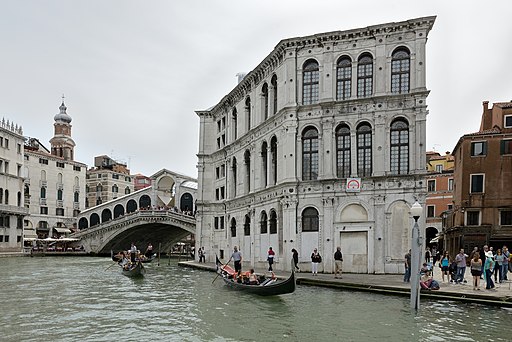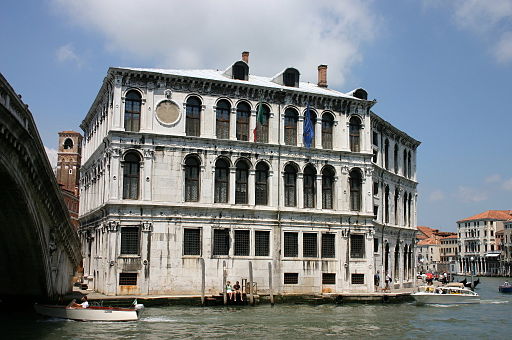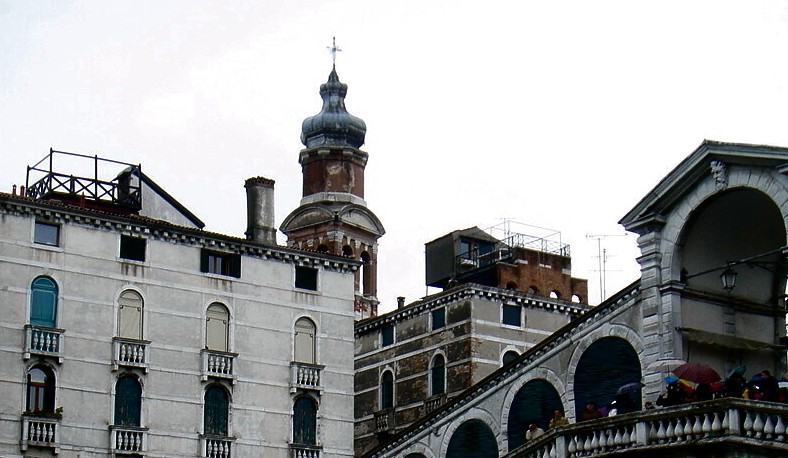Weitere Beispiele von
“Venedig in alten Photographien”
auf Sparismus:
Maurzio #Silbermann, Ottico, #Trieste Corso 711, sv #91, Palazzo #Ducale con Chiesa San #Giorgio #Maggiore, #Piazzetta di San #Marco, circa 1863 https://sparismus.wordpress.com/2015/09/19/maurzio-silbermann-ottico-trieste-corso-711-sv-91-palazzo-ducale-con-chiesa-san-giorgio-maggiore-piazzetta-di-san-marco-circa-1863/
Carlo #Naya, cdv #1, #Venezia, Campo San Maurizio No 2758, Veduta presa da San Giorgio Maggiore, cdv, circa 1865 https://sparismus.wordpress.com/2015/07/30/carlo-naya-venezia-campo-san-maurizio-no-2758-veduta-presa-da-san-giorgio-maggiore-cdv-circa-1865/
Carlo #Naya, #Venezia, Campo San Maurizio No 2758, Tre Ponti a Santa #Marta, Sestiere #Dorsoduro e Sestiere Santa #Croce, circa 1865 https://sparismus.wordpress.com/2015/09/11/carlo-naya-venezia-campo-san-maurizio-no-2758-tre-ponti-a-santa-marta-sestiere-dorsoduro-sestiere-santa-croce-circa-1865/
Carlo #Naya, #Venezia, #Colonna e Palazzo #Ducale, Riva #Schiavoni, Molo della #Piazetta, circa 1863 https://sparismus.wordpress.com/2015/09/16/carlo-naya-venezia-colonna-e-palazzo-ducale-riva-schiavoni-molo-della-piazetta-circa-1863/
Carlo #Naya, #Venezia, Campo San Maurizio No 2758, cdv, Riva degli #Schiavoni, circa 1865
Carlo #Naya, #Venezia, Campo San Maurizio No 2758, cdv, Riva degli #Schiavoni, circa 1865
Carlo #Naya, #Venezia, Campo San Maurizio No 2758, cdv #28, Panorma dal #Campanile, westwärts, #Dogana da Mar, circa 1865 https://sparismus.wordpress.com/2015/08/10/carlo-naya-venezia-campo-san-maurizio-no-2758-cdv-28-panorma-dal-campanile-westwaerts-dogana-da-mar-circa-1865/
Carlo #Naya, #Venezia, Campo San Maurizio No 2758, cdv #31, Canal Grande, #Canalazzo, Blick auf Ponte di Rialto, #Rialtobrücke, circa 1865 https://sparismus.wordpress.com/2015/09/06/carlo-naya-venezia-campo-san-maurizio-no-2758-cdv-31-canal-grande-canalazzo-blick-auf-ponte-di-rialto-rialtobruecke-circa-1865/
Carlo #Naya, #Venezia, Campo San Maurizio No 2758, cdv #35, Veduta presa dalla Salute, #Bacino di San Marco, #Campanile, circa 1865 https://sparismus.wordpress.com/2015/09/04/carlo-naya-venezia-campo-san-maurizio-no-2758-cdv-35-veduta-presa-dalla-salute-bacino-di-san-marco-campanile-circa-1865/
Carlo #Naya, #Venezia, Campo San Maurizio No 2758, cdv #70, Ca’ #Rezzonico, Palazzo #Giustiniani e #Foscari, circa 1865 https://sparismus.wordpress.com/2015/08/31/carlo-naya-venezia-campo-san-maurizio-no-2758-cdv-70-ca-rezzonico-palazzo-giustiniani-e-foscari-circa-1865/
Carlo #Naya, #Venezia, Campo San Maurizio No 2758, cdv #109, #Piazetta di San Marco, circa 1865
Carlo #Naya, #Venezia, Campo San Maurizio No 2758, cdv #109, #Piazetta di San Marco, circa 1865
Palazzo dei Camerlenghi
Fondamenta Vin Castello, 30125 Venezia, Italy
https://en.wikipedia.org/wiki/Palazzo_dei_Camerlenghi
Palazzo dei Camerlenghi
is a Renaissance palace in Venice, northern Italy, located in the sestiere (quarter) of San Polo. It faces the Canal Grande, adjacent to the Rialto Bridge.
Italiano: Il Palazzo dei Camerlenghi ed il Ponte di Rialto a Venezia, 2013.
English: The Rialto bridge and the Palazzo dei Camerlenghi in Venice, 2013.
Français : Le pont Rialto et „Palazzo dei Camerlenghi“ à Venise, 2013.
History
The palace was built from 1525 to 1528 under design by Guglielmo dei Grigi, who was inspired by the style of Mauro Codussi and Pietro Lombardo. It was the seat of several financial magistrates, including the Camerlenghi whom it takes its name from, the Consuls of the Traders and the Supra-Consuls of the Traders. Due to this function, the lower floor was used as a jail for the insolvents: the location nearby the crowded Rialto Bridge served as an admonition for the people passing there.
The palace currently houses the regional seat of the Italian Comptroller and Auditor General.
Giuseppe Canella (1788-1847), Barges (Barconi) at the Rialto, 1833:
The work was painted in 1833 and shows the Rialto bridge on the Grand Canal with the Palazzo dei Camerlenghi and the Fabbriche Vecchie on the right and the Fondaco Fondaco dei Tedeschi on the left. It does not appear to have been one of the Venetian views presented the following year at the Esposizione di Belle Arti di Brera, where the numerous canvases shown included Riva degli Schiavoni and The Mouth of the Rio di Castello in Venice.
Canella’s presence in Venice is securely documented in 1815 and again in 1837 on the occasion of his long East European journey through the cities of Vienna, Berlin, Dresden, Pest and Prague. The date of the work does not rule out the possibility of the view having been studied during the artist’s first stay in Venice, as he built up his figurative repertoire by filling his sketchbooks with as many subjects as possible, drawn from life with great fluency during his travels for later use, sometimes after an interval of many years. This working method is documented, for example, by Seascape on the Coast of Barcelona (1833) [1] and Travellers at Rest in Spain (1839, Brescia, Civici Musei) [2], both based on a trip to Spain made in the period 1820–22.
The same view of the Rialto was depicted by Antonio Canal, known as Canaletto, in a celebrated painting formerly in the collection of Joseph Smith, the British consul in Venice (Royal Collection at Winsor Castle [3]), which Canella may have known through the engraving by Antonio Visentini, in circulation as from 1735. While Canaletto’s work focuses on the precise depiction of the monumental buildings, painted from different angles and suitably rearranged within a panoramic view, Canella’s sticks very close to reality and was unquestionably painted on the spot from a slightly low and off-centre viewpoint in such a way as to highlight the mercantile activities at the expense both of the buildings, where lively figures are shown hanging out the washing on the terraces, and of the bridge itself, which is half-hidden in the distance.
For this painting too, Canella drew contrasting reactions from critics on the occasion of the exhibitions in Milan by adopting a bright, enamel-like kind of light borrowed from the northern landscape painting that the artist had the opportunity to study during his repeated travels in the Netherlands.
Through his realistic approach and handling of light and atmosphere, the artist championed a radical renewal in perspective view painting with respect both to the romantic and to the Venetian models that were very popular at the time in Milan, where they had been widely circulated as from the mid-1810s through precise small-sized copies of works by Giovanni Migliara (including the View of the Doges’ Palace in Venice, Cariplo Collection) and by the Venetian painter Bernardino Bison as from 1831. Evidence of the commercial success of this Venetian subject in particular with a cultured international clientele is also provided by the (now lost) canvas painted by Giuseppe Canella around 1838 for Count Kolowrat, the Austrian minister of state and a great collector of Italian art, which may have been a replica of the work in the Cariplo Collection.
Description
The palace has a pentagonal plan which follows the shore of the Canal Grande, with three floors. It has tall windows with centrings, divided by false columns and decorated with friezes. There were once polychrome marble and porphyry slabs, now lost.
Due to the Venetian tradition that, when leaving the position, a magistrate would leave a religious-themed painting and a portrait in his former seat, the Palazzo dei Camerlenghi housed numerous artworks. These were dispersed during the French occupation; some returned to Venice, mostly to Gallerie dell’Accademia.
Italiano: Palazzo dei Camerlenghi a Rialto. Foto scattata da me il 30.6.05. Fotocamera Canon Eos 300D 6,0 mp., 2005
https://en.wiktionary.org/wiki/camerlengo
Italian
Etymology
From Frankish *kamerling (whence Old High German chamarling and French chambellan).
The root of the word is Latin camera; the word was probably coined at the court of Frankish kings.
camerlengo
camerlengo m (plural camerlenghi)
https://fr.wikipedia.org/wiki/Antonio_Perini
Antonio Perini
(1830-1879)
fut l’un des premiers photographes primitifs qui exercèrent en Italie, principalement à Venise.
http://biblioteche.comune.trieste.it/Record.htm?Record=19309760157911279429&idlist=2
Perini, Antonio
Fotografo attivo a Venezia presumibilmente dal 1855 al 1879 in Calle larga San Marco Ponte dell’angelo n. 401-403 con negozio sotto le procurative nuove 403 e a Verona.
Deposito Piazza San Marco sotto il Campanile n. 28-29.
Ottiene l’autorizzazione all’esercizio fotografico il 23 luglio 1853.
Sono gli anni in cui Carlo Ponti, avvalendosi di fotografi veneziani, costruisce il primo catalogo di vedute fotografiche di Venezia e dei suoi monumenti.
Solo il 10 febbraio 1859 ottiene pero‘ l’autorizzazione alla vendita dei lavori fotografici nel negozio ai piedi del campanile di San Marco.
La notorieta‘ del Perini, oltre alle belle vedute di Venezia, Padova e Verona, e‘ legata alla riproduzione del Breviario Grimani, che viene completata nel 1862, in 110 stampe fotografiche all’albumina corredate da un volume di note illustrative, e al Cosmorama fotografico; per queste opere non gli mancano i riconoscimenti ufficiali alle Esposizioni di Parigi del 1867, di Bruxelles e di Vienna nel 1873 dove vengono presentate.
Sul v. di un cartoncino: Stabilimento fotografico di Antonio Perini autore e proprietario del fac-simile del Breviario Grimani e del cosmorama fotografico privilegiato. Premiato alle esposizioni universali di Parigi e di Bruxelles.
Periodo – Attività: Venezia, dal 1855, in calle larga S. Marco, Ponte dell’Angelo 403
Fonti: P. Becchetti, p. 124
Fotografia italiana dell’Ottocento, p. 171-172
Aggiornamenti: 16/09/2011 Morgan Claudia (Funz. resp.)
https://en.wikipedia.org/wiki/San_Bartolomeo,_Venice
San Bartolomeo (Saint Bartholomew)
is a church in Venice, Italy.
It is near the Rialto Bridge in the sestiere, or neighborhood, of San Marco.
English: Church of San Bartolomeo in Venice, 2012.
Français : Église San Bartolomeo à Venise, 2012.
Italiano: Chiesa di San Bartolomeo Venezia. L’ingresso su Salizada Pio X e il campanile, 2012.
History
The church was supposedly founded in 830, and was originally dedicated to Saint Demetrius of Thessaloniki. It was renovated in 1170, and became the church of the German community in Venice, whose commercial headquarters were nearby at the Fondaco dei Tedeschi.
The church was rebuilt again in the 18th century. The bell tower was built in 1747-1754 based on designs of Giovanni Scalfarotto.
Italiano: Venezia: campanile di San Bartolomeo; in basso a destra il Ponte di Rialto, 2008.
https://commons.wikimedia.org/wiki/Category:Antonio_Perini
Mag. Ingrid Moschik,
political ward artist







